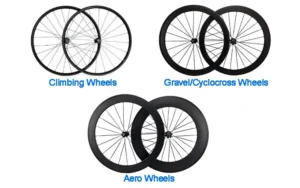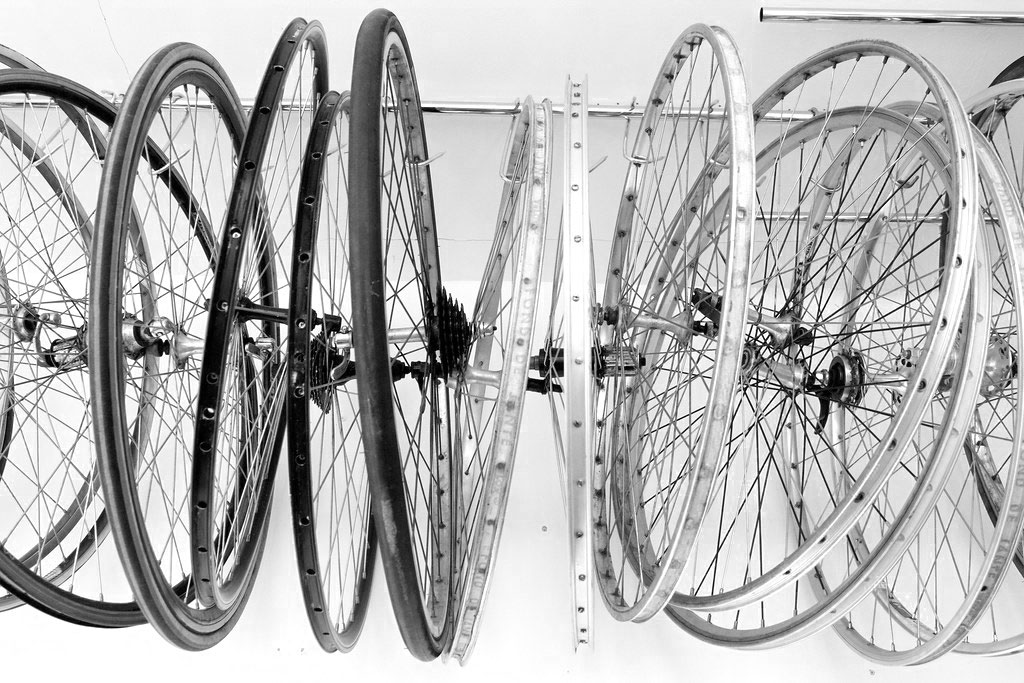Bicycle wheels
The circular shape of bicycle wheels is crucial for efficient energy transfer and smooth riding. Unlike other shapes, circular wheels minimize energy loss when converting rotational energy into kinetic energy. If the wheels were any other shape, like squares or triangles, the edges would dig into the road, requiring extra effort to pull them out and move forward. This would result in a bumpy ride and inefficient use of energy. The circular design, therefore, ensures the least resistance and the most effective use of power.
The Role of Wheel Radius in Cycling Performance
The radius of a bicycle wheel plays a vital role in determining the bike’s overall performance. It directly affects speed, stability, and handling across different terrains. A larger wheel radius generally allows for higher speeds because the bike covers more distance with each rotation. On the other hand, smaller wheels improve maneuverability, especially in tight turns or on uneven surfaces, making them ideal for riders seeking agility.
Furthermore, the radius of the wheel influences how easily a cyclist can overcome obstacles. Larger wheels roll more smoothly over bumps and potholes, offering a more comfortable ride on rugged terrain. Riders should carefully consider their goals and the type of riding they do when choosing a wheel size, as the right radius can significantly enhance both performance and enjoyment.
Types of Bicycle Wheels and Their Radii

Bicycle wheels come in various types, each designed to suit specific riding styles and terrains. For instance, road bikes typically feature narrow, lightweight wheels with a radius ranging from 27 to 30 inches, optimized for speed and efficiency on smooth surfaces. In contrast, mountain bike wheels are wider and sturdier, with a radius between 26 to 29 inches, designed to absorb shocks from rough trails and provide better grip.
Hybrid bikes offer a middle ground with radii around 28 inches, making them versatile for both paved roads and light off-road paths. Specialty wheels, like those on BMX bikes, are smaller—around 20 inches—enhancing maneuverability for tricks and stunts. Touring bikes, used for long-distance rides, may have larger wheels up to 700C (approximately 29 inches), offering stability when loaded with gear.
How to Measure the Radius of a Bicycle Wheel
Measuring the radius of a bicycle wheel is straightforward. Start by placing your bike on a flat surface for stability. Using a measuring tape or ruler, measure across the wheel from one edge to the other, ensuring the tape is straight and level. Next, locate the center hub of the wheel and measure from this central point to the edge of the rim. This distance is the radius, which is half of the wheel’s diameter. For accuracy, repeat the measurement a few times and average the results if necessary.
Factors to Consider When Choosing the Right Wheel Radius
Selecting the right wheel radius for your bike is essential for optimizing your riding experience. Consider your riding style first—if you’re focused on speed, a smaller radius might be better for aerodynamics. For off-road enthusiasts, larger wheels are advantageous for tackling rough terrain. Your body size and height also matter; taller riders may prefer larger wheels for better balance and stability, while lighter riders might find smaller wheels easier to control.
The type of terrain you usually ride on is another crucial factor. Smooth roads require different wheel specifications compared to rugged trails. Additionally, consider tire compatibility and the availability of replacement parts when selecting a wheel radius. Each factor contributes to creating a ride that is perfectly tailored to your needs.
Recommended Wheel Radii Based on Riding Style and Terrain
To maximize your cycling experience, choose the wheel radius that best suits your riding style and the terrain you frequent. For road cyclists, a radius of around 700c (approximately 27 inches) is ideal for speed on smooth surfaces. Mountain bikers benefit from larger radii, such as 29 inches, which offer better stability and traction on rough trails. Touring cyclists might opt for versatile 26-inch wheels, providing a good balance of comfort and control across various surfaces.
Tips for Maintaining Optimal Wheel Radius
Maintaining your bicycle wheels is essential for preserving the optimal radius and ensuring top performance. Regularly check tire pressure, as under-inflated tires can alter the effective radius and impact speed and control. Inspect your wheels for signs of wear, such as cracks or dents, and keep the spoke tension even to avoid wobbling. Cleaning the rims regularly helps prevent imbalances that could affect your ride.
Conclusion
Understanding the significance of bicycle wheel radius is essential for any cyclist, as it affects performance, handling, and comfort. Whether navigating city streets or tackling rough trails, knowing your wheel radius can significantly enhance your riding experience. A well-chosen wheel radius offers better control and stability, leading to a more enjoyable ride. Regular maintenance ensures that your wheels remain in optimal condition, ready to provide the best possible cycling experience.






